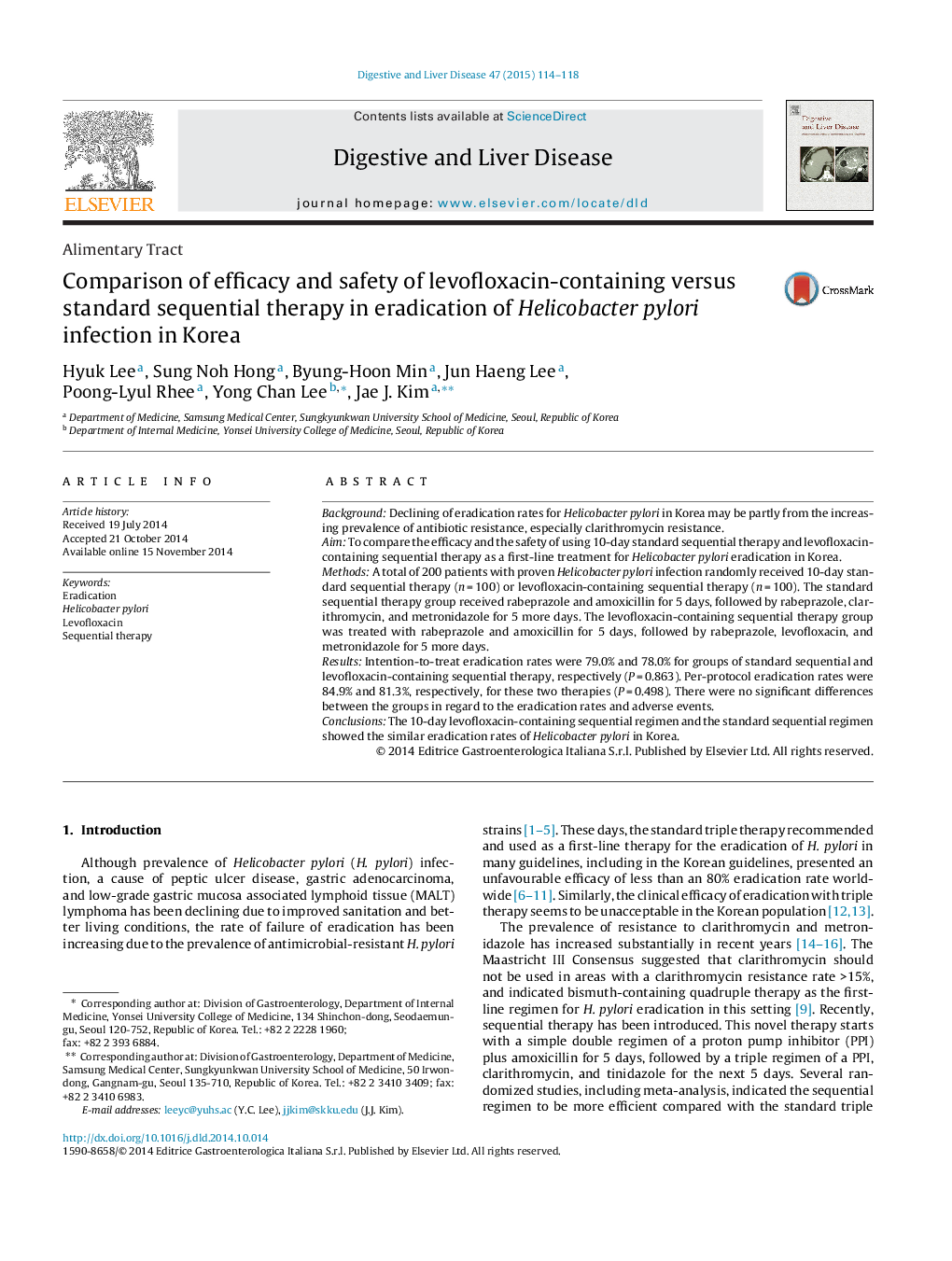| Article ID | Journal | Published Year | Pages | File Type |
|---|---|---|---|---|
| 6088642 | Digestive and Liver Disease | 2015 | 5 Pages |
BackgroundDeclining of eradication rates for Helicobacter pylori in Korea may be partly from the increasing prevalence of antibiotic resistance, especially clarithromycin resistance.AimTo compare the efficacy and the safety of using 10-day standard sequential therapy and levofloxacin-containing sequential therapy as a first-line treatment for Helicobacter pylori eradication in Korea.MethodsA total of 200 patients with proven Helicobacter pylori infection randomly received 10-day standard sequential therapy (n = 100) or levofloxacin-containing sequential therapy (n = 100). The standard sequential therapy group received rabeprazole and amoxicillin for 5 days, followed by rabeprazole, clarithromycin, and metronidazole for 5 more days. The levofloxacin-containing sequential therapy group was treated with rabeprazole and amoxicillin for 5 days, followed by rabeprazole, levofloxacin, and metronidazole for 5 more days.ResultsIntention-to-treat eradication rates were 79.0% and 78.0% for groups of standard sequential and levofloxacin-containing sequential therapy, respectively (P = 0.863). Per-protocol eradication rates were 84.9% and 81.3%, respectively, for these two therapies (P = 0.498). There were no significant differences between the groups in regard to the eradication rates and adverse events.ConclusionsThe 10-day levofloxacin-containing sequential regimen and the standard sequential regimen showed the similar eradication rates of Helicobacter pylori in Korea.
